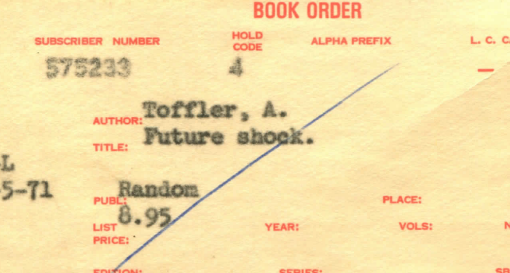 This could also be viewed as a MARC (MAchine Readable Cataloging) timeline. The story of why MARC continues and why Bibframe failed illustrates that it is not enough for something to be better or even for everyone to agree that the old solution has outlived its usefulness. There also has to be an agreement, either from the top or bottom, to use the new solution.
This could also be viewed as a MARC (MAchine Readable Cataloging) timeline. The story of why MARC continues and why Bibframe failed illustrates that it is not enough for something to be better or even for everyone to agree that the old solution has outlived its usefulness. There also has to be an agreement, either from the top or bottom, to use the new solution.
Photo by chuttersnap on Unsplash
The timeline for Bibframe is an airline departure screen showing flights that are delayed or canceled. MARC is out of date, but it remains in use. Bibframe has been around long enough to be outdated, which helped spawn new derivatives. None of these will be as outdated as MARC, but MARC remains because it has always been there.
Bibframe debuted in 2012 as a collaboration between the Library of Congress and Zepheira. It was going to be the next big thing in metadata, finally displacing 1969’s MARC, which had largely been developed at the Library of Congress by Henriette Avram. In 2015 the Bibframe players divorced, which spawned Bibframe 2.0 from the Library of Congress and Bibframe Lite from Zepheira. Libraries have stayed away from the conflict and stayed with MARC.
At this point, Blockchain could become either MARC or Bibframe. It could become established as the way to build self verifying networks at the expense of improved protocols that come along later. It could also become the solution that wasn’t, largely unable to transfer its success in the financial world to other venues.
| Program | Author | Year | Destination | Status |
| Bibframe 2.0 | Library of Congress | 2015 | Linked Data | Delayed |
| MARC | Henriette Avram, Library of Congress | 2015 | Metadata | Landed |
| BIbframe Lite | Zepheira | 2015 | Linked Data | Delayed |
| MARC | Henriette Avram, Library of Congress | 2015 | Metadata | Landed |
| Bibframe | Library of Congress and Zepheira | 2012 | Linked Data | Canceled |
| MARC | Henriette Avram, Library of Congress | 2012 | Metadata | Landed |
| MARC | Henriette Avram, Library of Congress | 1969 | Metadata | Landed |

